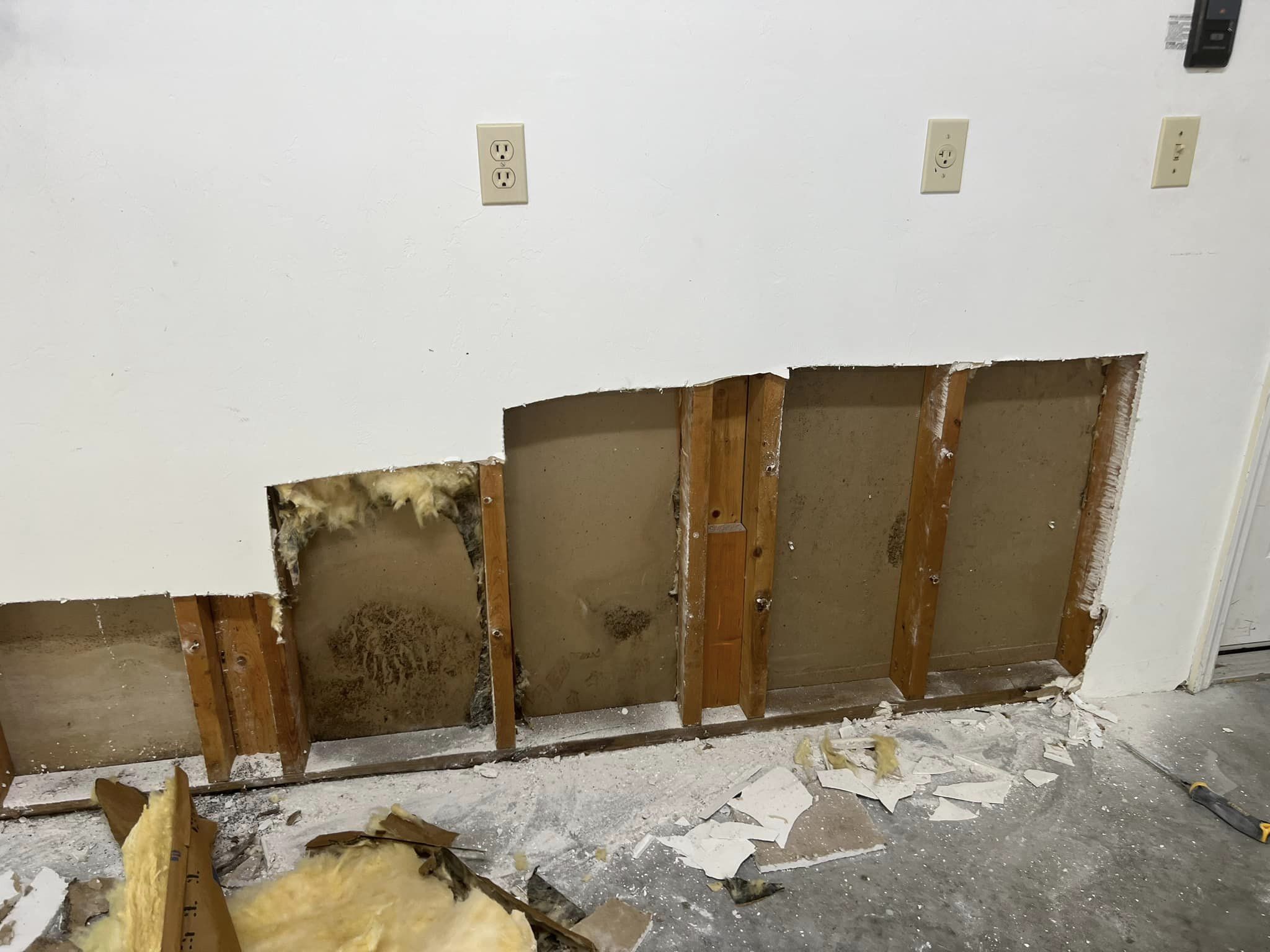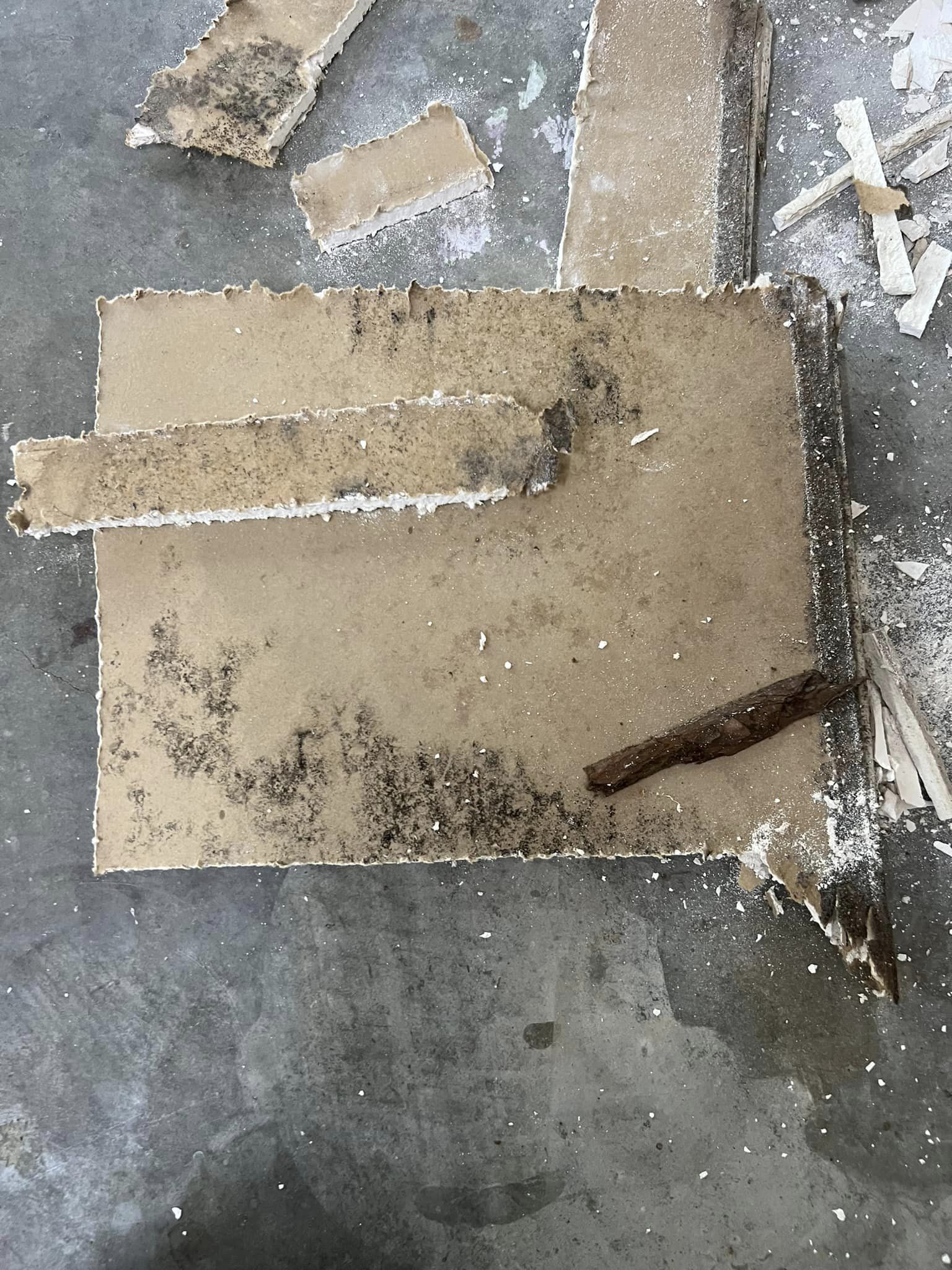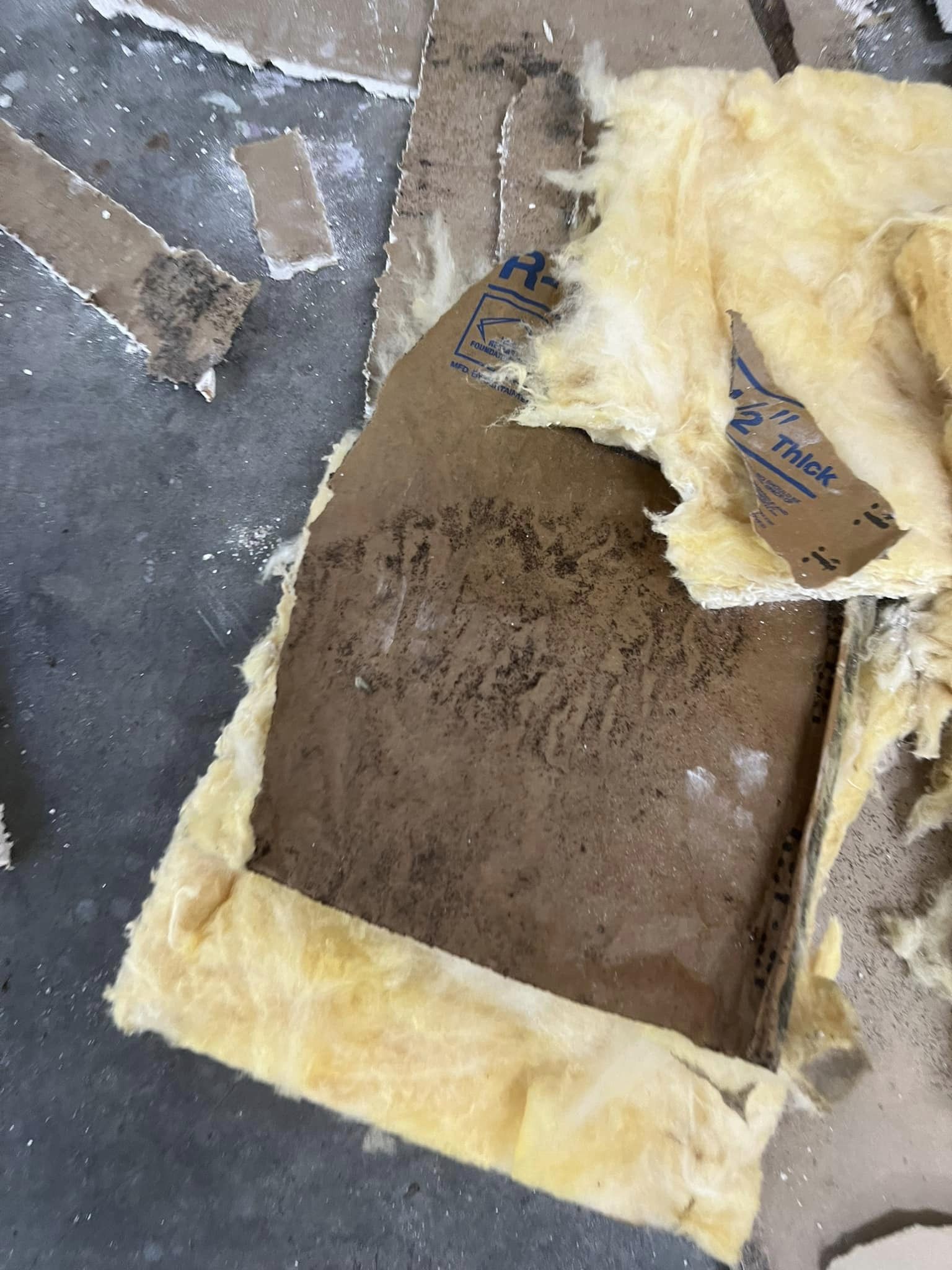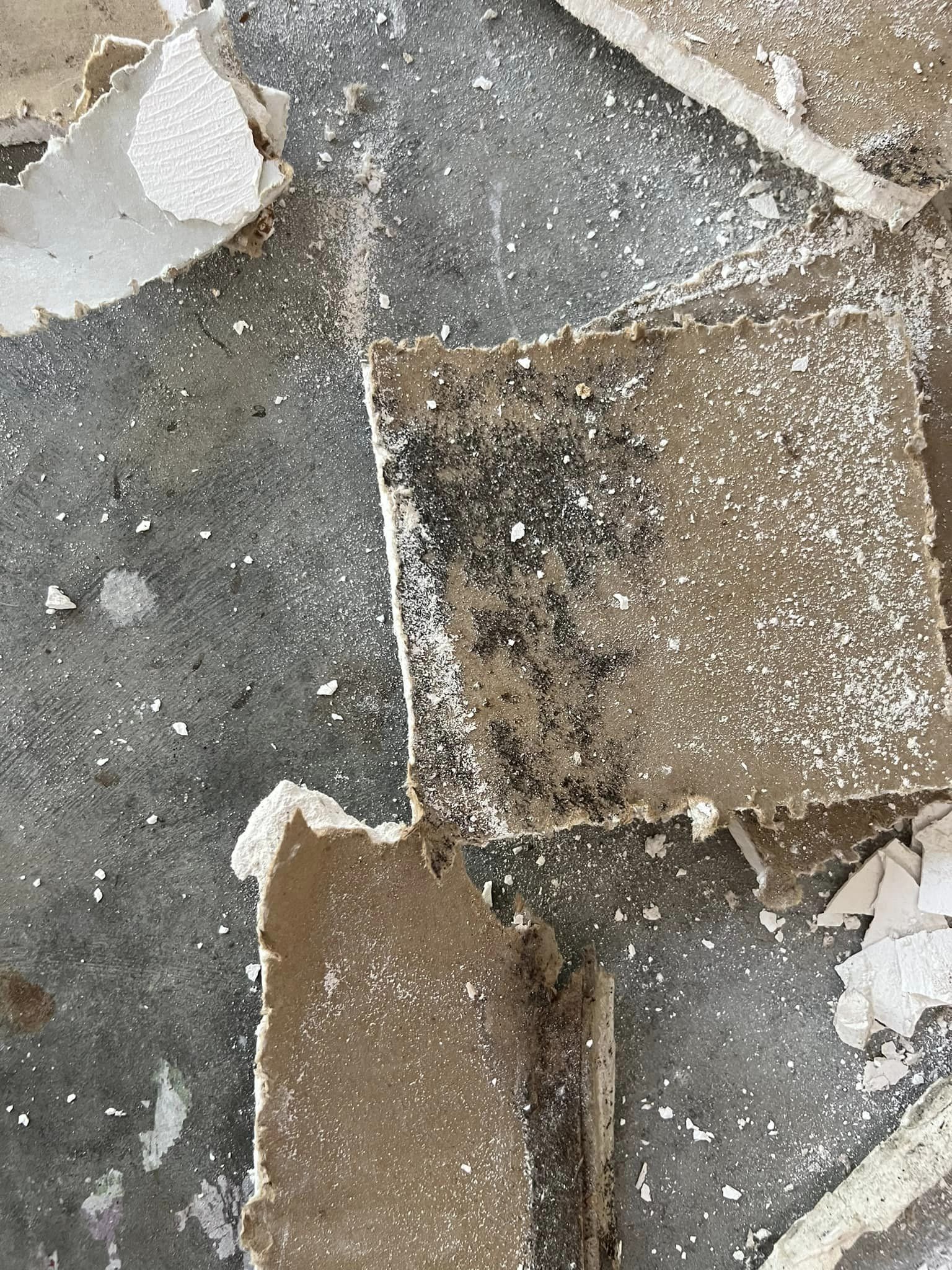Is there mold in my garage causing the musty smell due to the AC drain pan overflowing and high humidity, as indicated by the inspection of the drywall holes?
8 months ago
Last Updated: October 30, 2024
A little while back, I mentioned a funky odor in my garage. I remembered my AC drain pan had overflowed before and thought maybe mold was lurking around during humid days.
I ended up cutting into the drywall to investigate, and ended up going even deeper.
Check out the pics I snapped. Do you think this could be the reason behind the musty smell in my garage?




Definitely. You’ll want to use the moisture gauge around the perimeter. Having mold in one spot usually indicates it’s spread everywhere.
I should inspect the area behind the air handler. It was located next to it
Oh yeah!
Yes
For remediation, you can try doing it yourself, but be cautious. Remember, you can’t salvage drywall that is moldy, so remove it. Use Concrobium to eliminate mold on studs – avoid using bleach or other ineffective methods. Also, make sure to address the source of moisture.
Should I also remove the Concrobium treatment from the rest of the drywall?
The same thing happened to me too. I removed any sheetrock that had mold growing on it. In my opinion, trying to treat mold without removing the sheetrock is just asking for trouble in the future. To keep things simple, I didn’t just cut out the little infected squares, I took out entire 4’x4′ and even some 8×4 sheets. I also sprayed the wooden studs, joists, and underfloor with concrobium where the sheetrock had been, just to be on the safe side even if I didn’t see mold on the wood. After that, I replaced everything with fresh new sheetrock sheets. There’s more details to it, but the main thing I learned was to “replace, don’t just treat”.
All you really did was remove the color with bleach. At a minimum, drywall needs to be removed or replaced at least 1 foot beyond where the mold is visible.
Concrobium is really effective at killing mold and is great for porous surfaces. I’m thinking about going up 4 feet, so I’ll keep going a bit higher and take out all the drywall.
Read the label and discovered that the bleaching agent only targets two types of mold and is mainly used for prevention rather than restoration of porous surfaces. Following the IICRC S520 standards for proper mold remediation, which includes removing mold damaged drywall, is crucial. As a trained mold supervisor/inspector, it’s important to ensure proper remediation to eliminate any remaining hyphae that could still cause problems.
It’s always great to see a fellow member offering good advice and sticking to industry standards. Thank you so much!
I can’t even count how many times I’ve had DIYers disagree with me on these issues.
Can I piggyback? We encountered a similar problem. We removed all the garage drywall because it was old anyway. We applied Concrobium to all the brick, but we didn’t realize it’s also suitable for wood. Should we use it on the wood too? We used 30% vinegar on the wood. Additionally, we replaced any wood showing visible mold.
By Concrobium is a solution containing sodium carbonate. It does not include bleach. The way it works is by coating the mold, and when the solution dries, the remaining sodium carbonate powder crushes the mold and spores.
This process eliminates the mold and spores, preventing further spread. Concrobium is said to be effective on porous surfaces, with directions indicating it can be used on wood and drywall.
My suggestion is to remove the affected area and then treat the remaining space with Concrobium. In my situation, I plan to remove 4 feet of drywall in the garage and AC room.
I had the same problem last summer when the pan overflowed while we were away. Just a heads up, if you’re fixing it yourself like I did, make sure to wear a respirator. I ended up getting pneumonia and even now, 7 months later, I still have trouble breathing. It took 3 months to recover from the pneumonia.
Wow, !
After our roof leaked, we experienced a similar problem. I suggest getting a water alarm or a device that turns off your AC if the drain pan fills up with water. ‘t forget to pour vinegar or bleach down the drain line monthly to prevent clogs and keep the pan from filling up.
Alisha Burklund I’ve learned to always pour vinegar down the AC drain line every 3 months.
I’m planning to get a new AC in 2024, and I’ll ensure it comes with an overflow sensor
PS: Home mold tests are available for just $15.
Every home mold test will detect mold 100% of the time.
For a cheaper alternative, try placing a piece of bread with no preservatives in each room. If it molds, there was existing mold in the room.
Hey Tom, how long do you usually keep the bread out for? It tends to get moldy after a while…
You’re probably good to go if the bread is bone dry and doesn’t have any mold – .
My experience was different – the home test came back negative after cleaning up.
Hopefully, you have access to fresh air and wear a mask. It might be a good idea to cut the drywall higher, maybe about a foot from the bottom of the receptacles. Consider replacing everything on both sides of the wall.
In my laundry room, there are pantry and cabinets on the other side. Do I need to take out the lower cabinets or can I work around them?
I would suggest checking for mold in the back to be safe.
I had way too much of it. Just 5% of that caused a pretty strong musty smell in my house.
There’s mold all around us. It just needs the right conditions to thrive and spread. You can’t eliminate it completely. If conditions are dry enough, it won’t thrive and spread, and you won’t detect its presence. You need to address the source of the moisture. Some drywall can be dried out and still be usable. Once drywall becomes too wet, it’s compromised and should be replaced. If you can easily press into the drywall with a screwdriver, it’s time for a replacement.